Opinion
What to Do When the Art World’s on Lockdown? Kenny Schachter Goes Searching for Cut-Price Deals From Quarantine
Our columnist ventures into the lockdown-era art market and finds that it's not quite the ghost town some might expect.

Our columnist ventures into the lockdown-era art market and finds that it's not quite the ghost town some might expect.

Kenny Schachter

“Corona, Corona, Corona, baby!” That’s the new rallying cry that on-the-run art dealer Inigo Philbrick—aka “Inigo! Inigo! Inigo!” as his now-infamous daily shower rant goes—wrote to me the other day. He might be the only person worldwide gleeful about the current fear, malaise, and chaos as COVID-19 sweeps the globe. No wonder, since it has seemingly put his “situation” on the back burner—though, not if I can help it. (Just let me know if/when you get bored of this particular saga, and I’ll stop telling you about it). I only wish he’d stop tormenting me via the DMs that continue to pop up daily on my Instagram under a new alias (after I blocked the last one). His latest missive was to tell me he’s in Lebanon trying to sell a “major Jeff Koons” to the Saudis—as if they’d forgotten the Kusama room he sold them that he didn’t own—and working on a derivatives trading platform for art. Great, just what we need.
He’s also constantly threatening me not to proceed with a planned film and documentary, which I’m pursuing on all cylinders, working with Creative Artists Agency and fielding loads of interest. Inigo’s methods of intimidation include unleashing my old pal the pit bull attorney Richard Golub on me—who he alleged was already under retainer (probably news to Golub)—and declaring his intention to suddenly show up at my door in New York, to which I responded I would call the police and file a restraining order. (I’d rather have IRS auditors over for tea than see Inigo in person again.) When his intimidations were met with scorn, he resorted to plan B: “Let’s let bygones be bygones and do some deals together!” Um, no thanks, I’m good. If I get murdered anytime soon it would be the perfect, still missing ending to the story. (I’m working on it, CAA!)
I hope you had a chance to read my New York Magazine piece on the subject, albeit edited with a heavy hand compared to the ace treatment I get at Artnet, which has resulted in a torrent of phone calls from filmmakers—helping me pass the time during these horrible, static days. In the process, I’ve nearly worn a hole in the floor pacing. In short time, I have managed to alienate and downright piss off a slew of agents, producers, and writers—not too dissimilar from my art world role. (Hollywood, here I come!)
In fact, the movie industry has all too many characteristics in common with the art market—a story appears, like a jpeg for a George Condo painting, and then everyone simultaneously shops it to death, whether they have permission to or not. I am a one-trick pony (art!) and movie-illiterate to boot—when asked, I can only come up with the 1971 classic Willy Wonka and the Chocolate Factory, starring Gene Wilder, as a cinematic reference. I’m also exploring an art-market musical! How cool would that be? Don’t answer.
Back to art. Things are bad, but could be worse. I just spoke to a notorious flipper who is getting offered primary works from sought-after artists at major galleries. It doesn’t get much more dire than that. Iwan Wirth recounted having to learn how to change coffee filters, and to be kind. In a flash, waiting lists have evaporated, and access abounds for all who can step up. And though the universal collector base has shrunk more than the sweater I tried to wash myself the other day, they are extant if you search hard enough. (Back to the household chores: I didn’t get as far as changing my sheets, but I did vacuum them.)
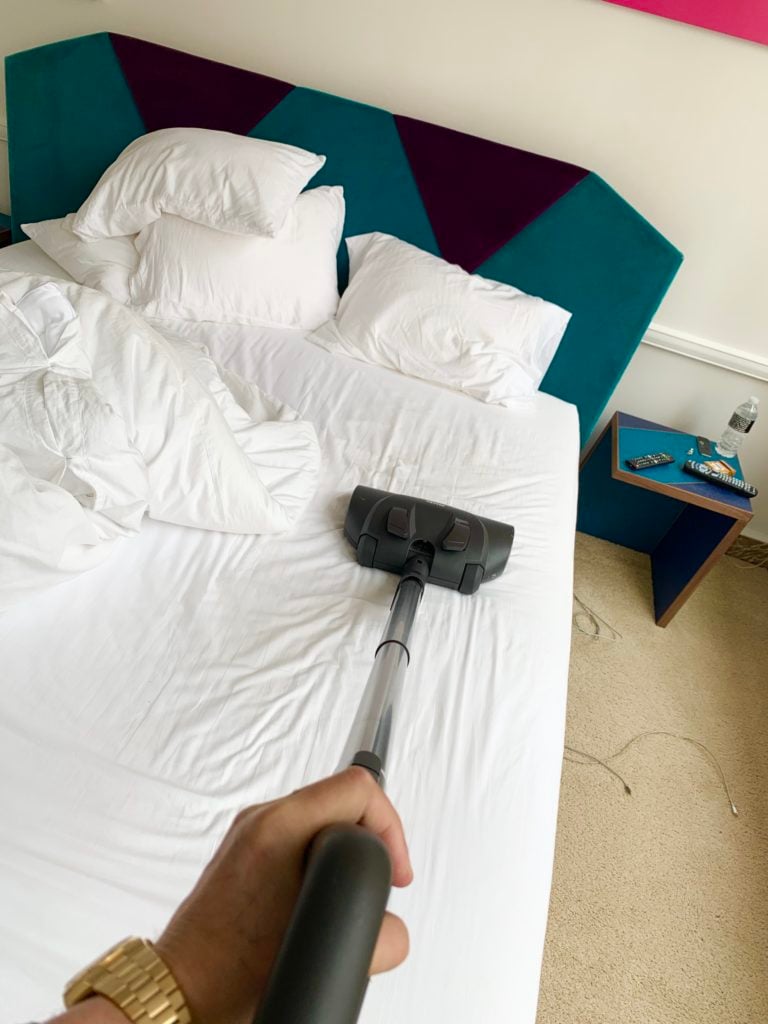
Household help is hard to come by these days, so I had to learn to clean my own sheets. Documentation by Kenny Schachter.
I even had a dream about selling my own art at a Phillips auction, and being grateful for it—how fucked up is that? Sure, there are many specific cases I have heard of invoices being cancelled outright. I have a few art payments on hold myself (for the time being), but as with liquor stores in New York State, galleries fulfill an essential need—selling art—and are open for business for the acquisitive, even though they’re not supposed to be. Nevertheless, as a warning of continuing trouble ahead, a famous investment banker, formerly of Goldman Sachs, texted me [sic]: “I have zero work all the deals are dead..the press and the media are criminals and have generated a global psychosis that is creating am economic depression; my view is that 2020 is fucked.” Oh, gee.
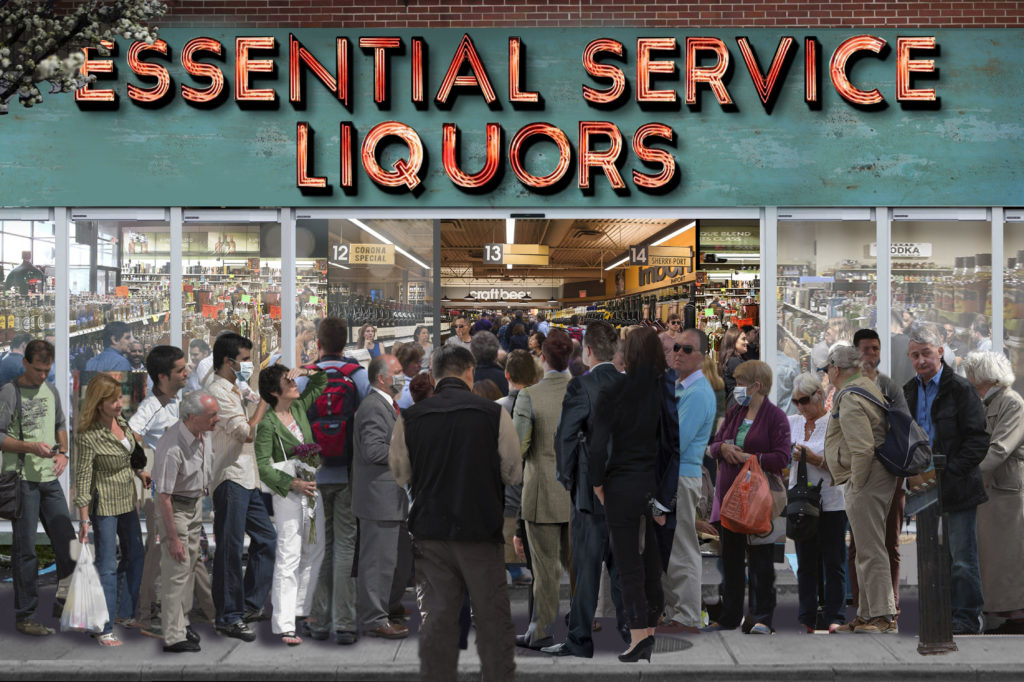
Leave it to the government to know what the people deem essential. Courtesy of Kenny Schachter.
The small-to-mid-level gallery crisis that has been rhetorically moaned and groaned about for years is upon us today in cold, hard fact, but I remain hopeful. As I told a collector (they exist, really!), art is like the cockroach—it won’t die until the end of the world, which I suspect is not quite upon us…yet. I haven’t been to a single online viewing room—it would be like a kid in candy store with no cash, a matchup I find less than appealing—though I did manage to buy a gouache from the Norwegian-born, Yale-educated artist Constance Tenvik, who contacted me on Instagram with an offer to paint me on WhatsApp. (The digital days we live in.) Clever strategy—but, like many, I don’t know where or when my next dollar will come from, so I got her to throw in another work gratis.
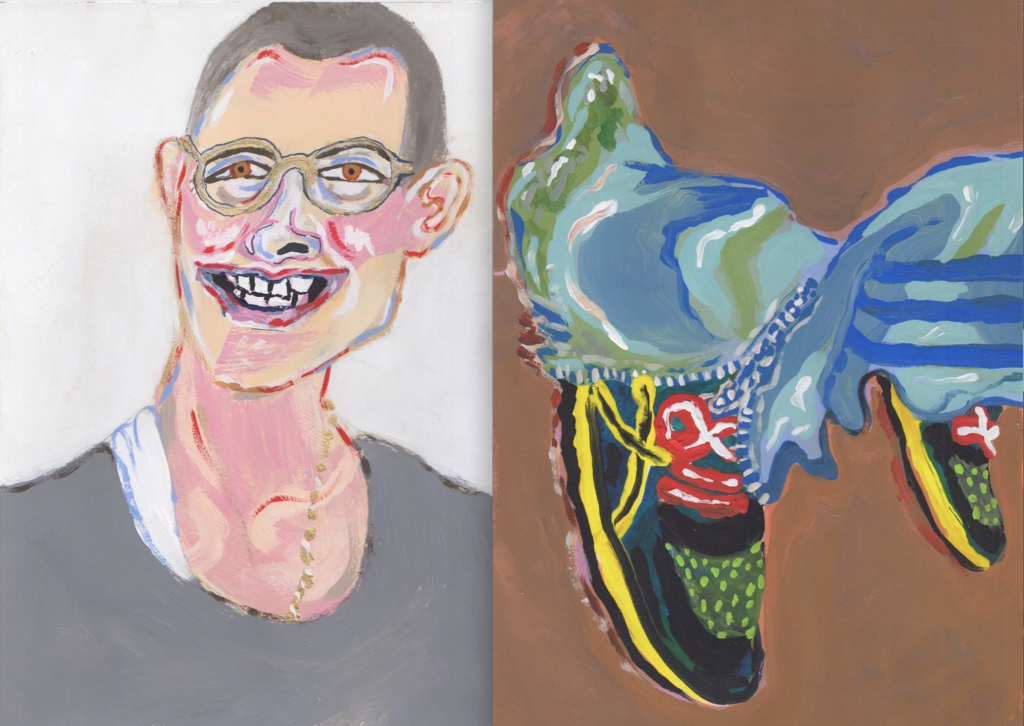
Can you see the resemblance? My WhatsApp quarantine portrait by Constance Tenvik, plus a two-for-the-price-of-one COVID bonus. Courtesy of Kenny Schachter.
On a more basic level, these are dangerous times. A spec-u-lector I know had his Manhattan home robbed while he was hiding out in the Hamptons (like so many New Yorkers, which has caused the per-capita rate of the virus in Long Island to exceed that of the city). While jewelry and other household goods were stolen along with a KAWS work, they left his Donald Judd wall sculpture intact. (Maybe I should grab it while he remains in exile.) The buyer in question, however, wasn’t deterred by the experience, and returned to the market with a vengeance, snapping up two Peter Sauls on the secondary market, a Nara from Blum & Poe, a Kathleen Ryan from Josh Lilley, and a Jonathan Chapline from the Hole. All the power to him. And although he mentioned feeling like the only guy buying art, he’s clearly not.
Nino Mier Gallery of Los Angeles, for instance, sold 10 Stefan Rinck sculptures for between $9,000 and $25,000 in the past two weeks, for an up to 25 percent discount depending on when you pay. (They are great, check ’em out!) I’ve also spoken to collectors who have purchased a Julie Mehretu for $2 million from Marian Goodman and a recent Rashid Johnson from David Kordansky. Still on the subject of deals, the storage firm Gander & White offered to hold some Roger Hilton works of mine for free rather than risk my health by returning them—a gesture I refused for the sole reason that my wife and two of my kids went to Nassau to visit her mom (before the airport there shut down), and I am mighty desperate for company. Oh, and I did a favor for one of the producers interested in my Inigo film to help him buy a much-in-demand Austyn Weiner painting.
Not everyone I spoke to is buying, or doing so without brutal hard-nose negotiations. One of the world’s foremost guarantors, who hails from Asia, is selling privately from his collection rather than seizing the opportunity to snap up works at hyper-discounted levels. And another offered 25 percent of the asking price for a deceased postwar American master; the deal, though initially rejected, is still pending. Also, I know a buyer that lowballed a mega-gallery on a Matisse that in all likelihood will be transacted. Junkies are junkies, and, like crack, an art habit is hard to shake. I’ve also heard of galleries like Pace and Lévy Gorvy drastically reducing staff, and cutting pay for those lucky enough to be kept on. This won’t change soon, sadly.
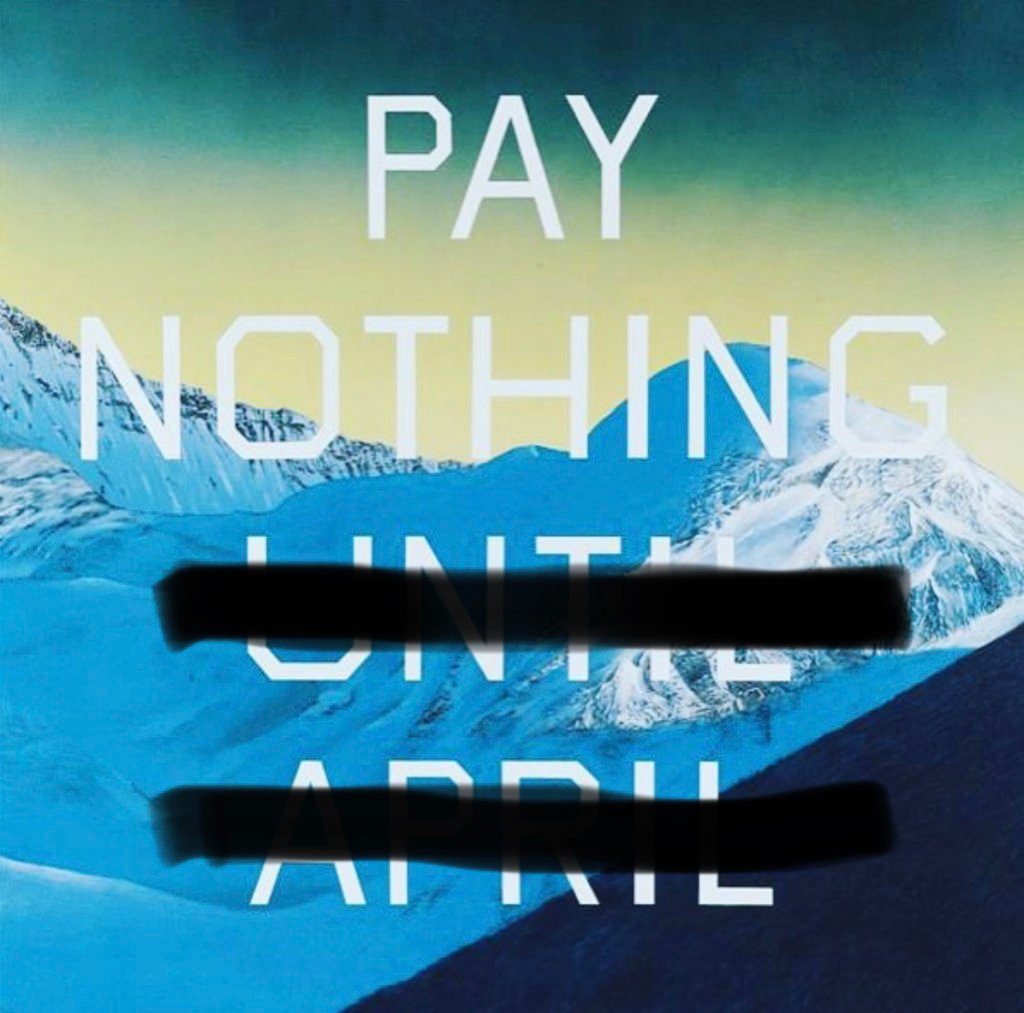
Forget Ed Ruscha’s tax text painting—let’s pay NOTHING till this is all over in a collective act of civil disobedience. Courtesy of Kenny Schachter.
I’ve been teaching a fine-art senior studio class at the School of Visual Arts—the first of its kind I’ve ever attended, let alone taught, although I’ve been lecturing since 1992 at the New School, New York University, and, for the last eight years, at the University of Zürich. I was warned in an SVA staff email on the subject of Zoom video lectures to avoid nudity and to consider using potatoes and other household items as teaching aids when addressing students, though I don’t think there was any connection between the two. With all this quarantining I am beginning to resemble a ginormous spud myself, as my thighs chafe on the way from my office to the kitchen.
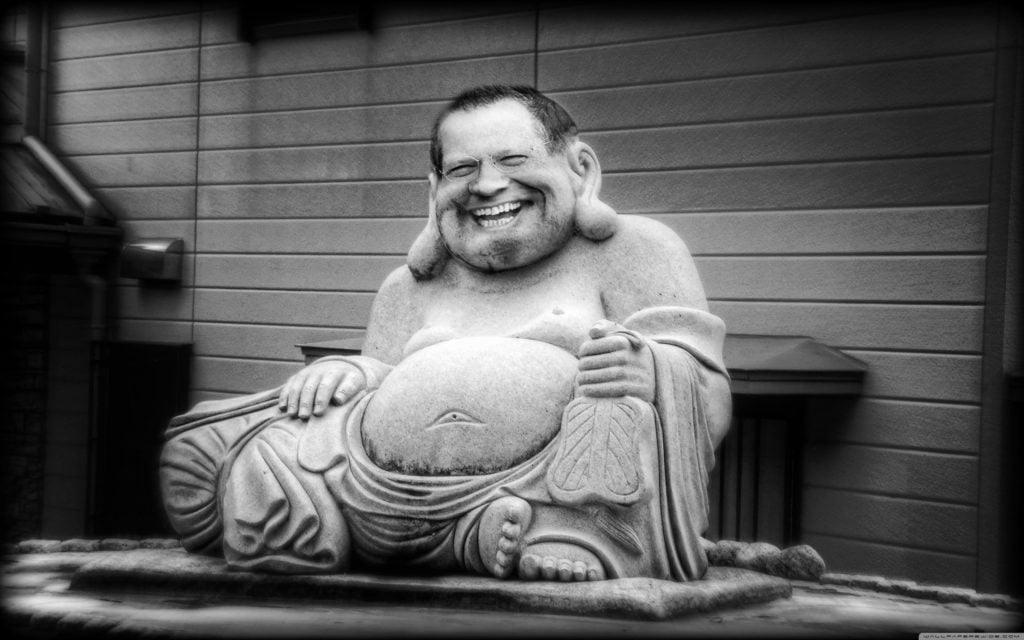
Fat and happy under home quarantine—just don’t ask me to get up. Courtesy of Kenny Schachter.
The lecture lasts for six hours—though the students informed me that most other classes don’t go the distance. Living alone, however, I am grateful for this captive audience, and I refuse to dismiss them a second early. Besides, as someone who works in the professional art world, I never get the chance to speak about art—only about who’s buying, selling, and exhibiting works. This is a refreshing change for me, from teaching artists from Vito Acconci, Paul Thek, and Ray Johnson to my former sworn enemy Tracey Emin. (I’ll leave that story for another time.)

Teaching my SVA class via Zoom resembles the set of the game show “Hollywood Squares.” Courtesy of Kenny Schachter.
In an article entitled The Last Days of the Art World, Jerry Saltz talks about the end of restaurants, art schools, and galleries as we formerly knew them, but I beg to differ. Our current predicament is not unprecedented—the toll of the 1918 Spanish Flu dwarfs our present circumstances by way of casualties (50 million to 100 million vs. under 75,000 as I type), and while this is not to belittle what is tantamount to a societal conflagration, let’s not forget: people don’t have short memories, they have little to no memory at all, young and old alike. Yes, some of my students are demanding a full or partial tuition refund—I’ll assume it’s in spite of my class, not as a result. To keep their loyalty, I plan to showcase their works on my Instagram account, rather than in the traditional senior exhibition, and it will achieve wider reach than the school’s usual end-of-term fare.
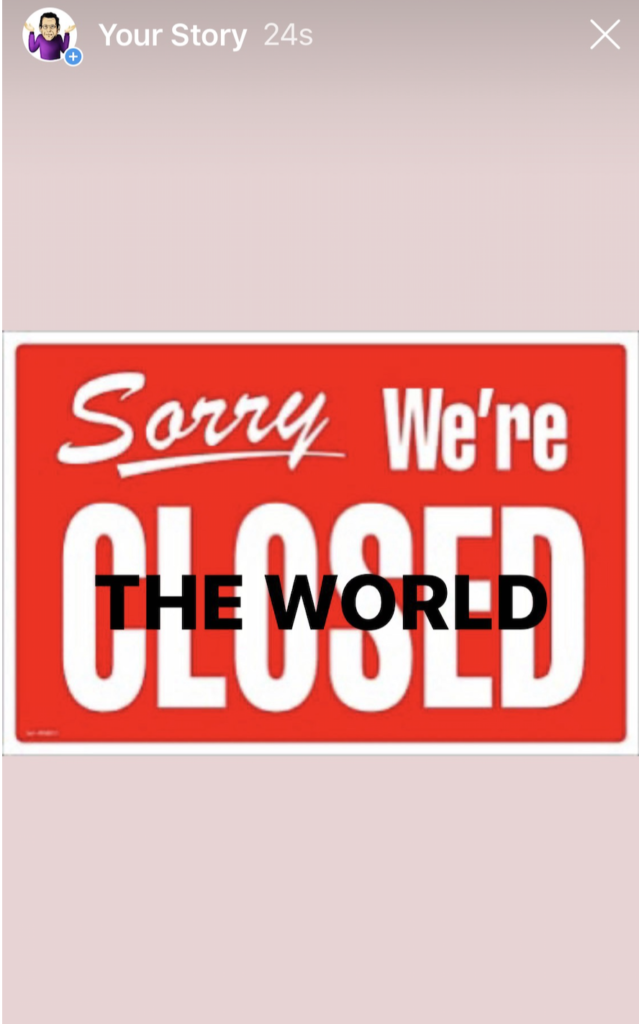
Wake me when this all of this is over. Courtesy of Kenny Schachter.
The rug has been pulled out from under the economy to a length I never imagined possible. We are in the midst of a period of radical deglobalization, and I can’t fathom how long it will take to rejuvenate, reinvigorate, and return to a healthy interdependence among nations. The world is in a state of controlled hibernation, like a patient with severe brain trauma. We’ve also been reduced to a proto-capitalist bartering economy, so I traded some books and a roll of Kenny Schachter-branded vanity toilet paper I made a few years ago for a stash of paper towels.
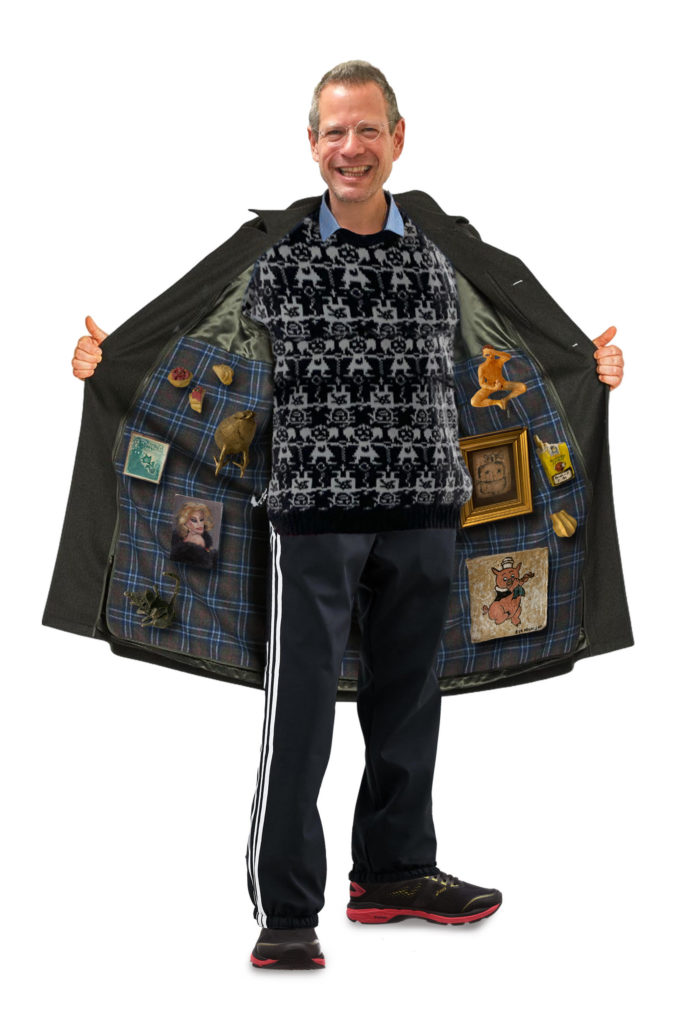
Psst, hey you! Wanna buy some art? One-on-one art dealing in the age of COVID. Illustration courtesy of Kenny Schachter.
I also managed to sell a bunch of other “editions” of my loo rolls on my Shopify website—which, happily enough, allowed me to recoup the obscene $2,500 I was charged at Lennox Hill Hospital three and a half weeks ago for a coronavirus test (before the federal freebies). Getting the test, incidentally, did not go well—I reflexively slammed the intern with my fist each time he shoved the swab up my nostril, nearly piercing my brain. I tested negative, even after being exposed to my son Adrian, who has had the illness for three weeks (though he’s fine, thank god). Finally, my negativity can be perceived as a good thing.
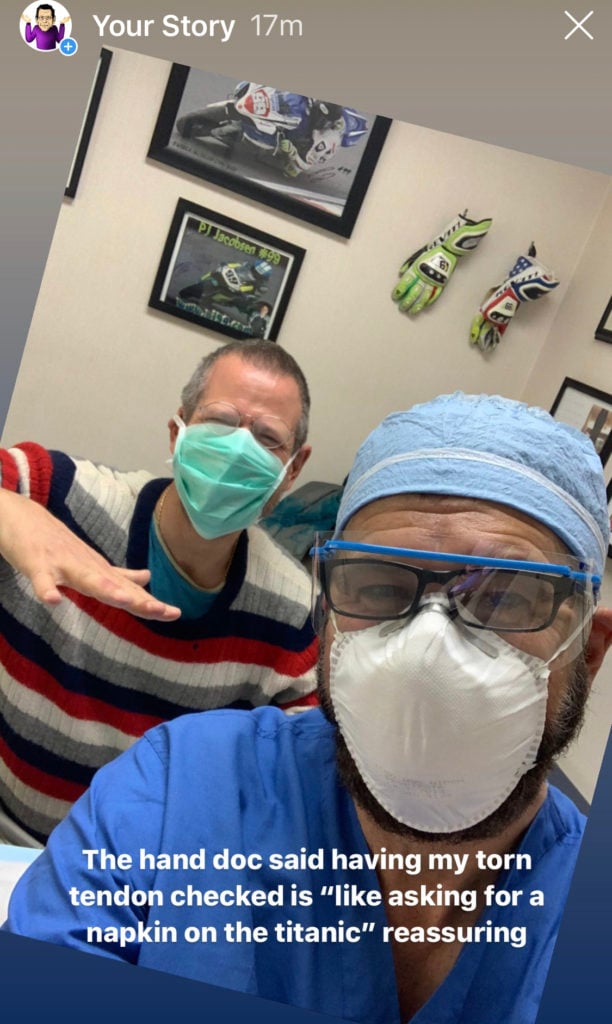
My hand doc hasn’t been seen or heard from since. I think he took early retirement—hope it wasn’t because of me. Courtesy of Kenny Schachter.
I had my still-torn finger tendon checked the other day, and the doctor snapped that having my hand checked at this point was like asking for a napkin on then Titanic. He stopped going into the office the very next day, but I trust there was no causal connection. On a more reassuring note, I will participate in the “June” Art Fair, now slated for September alongside a rescheduled Art Basel—though I am starting a betting pool as to whether Basel will take place—and will curate another iteration of a series of group shows I’ve held since 2012, entitled “Family Dose” (from the Sister Sledge lyrics of “We Are Family”). If all is not well by then, you will need to see art in the manner in which you had to procure a drink during prohibition in the 1920s: at an illicit speakeasy.
I have gotten some pushback on Instagram lately, where I seem to live nowadays (if it’s even possible to spend more time there then I already have), for espousing a return to normalcy in art as much as possible amidst the rampant distancing, death, and destruction. My feeling is, don’t just tiptoe around dull digital rooms—if at all possible, patronize artists and galleries, negotiate hard, buy cheap, get terms, do what you can, but for heaven’s sake try to buy. If the world ultimately collapses in a state of cataclysmic chaos, then buying the farm by looking at, making, or writing about art are good ways to go! By the way, New York is nowhere near as awful as described in the international press, and I love this city, and I’m not going aNYwhere.
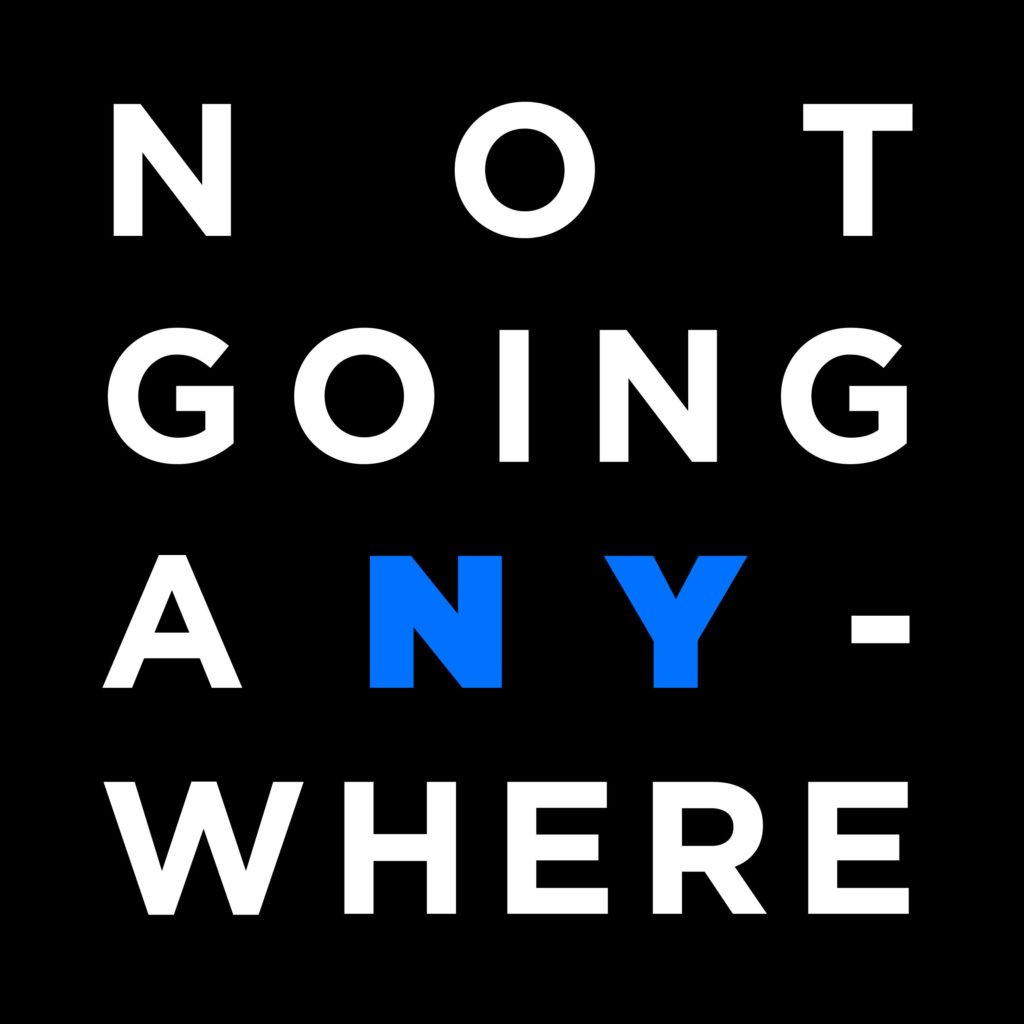
I’m not budging—a proud and happy new New Yorker till the bitter end. Courtesy of Kenny Schachter.